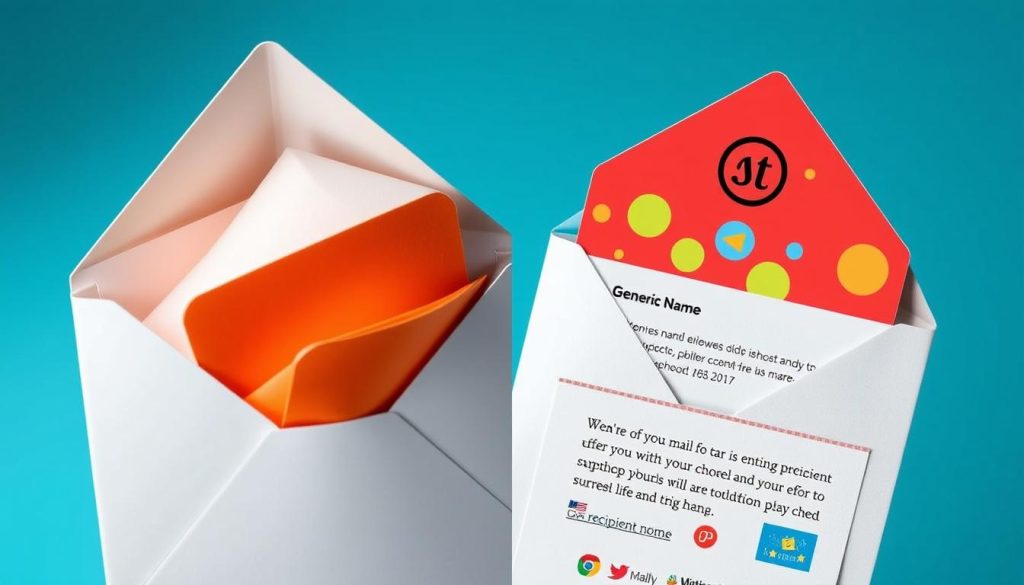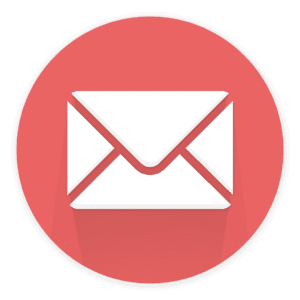In the world of business brokerage, getting leads and closing deals is key to success. Cold emails are a powerful tool for business brokers to reach out to potential sellers. They help grow their client base. But, making effective cold emails that grab attention and get people to engage is a challenge.
Business brokers have to deal with a crowded inbox. They need to build trust with strangers and show the value of their services clearly. By using advanced cold email techniques, they can overcome these hurdles and improve their lead generation.
This guide will show you how to create winning cold emails for business brokers. We’ll cover the basics, personalization, and using technology. You’ll learn how to boost your email outreach and get better results for your brokerage business.
Key Takeaways
- Understand the importance of cold emails in business brokerage for generating leads and closing deals
- Learn how to craft attention-grabbing subject lines that increase open rates
- Discover techniques for building a targeted audience and segmenting your email list
- Master the art of email structuring and formatting for maximum impact and engagement
- Leverage personalization and A/B testing to improve the effectiveness of your cold email campaigns
Understanding Cold Emails and Their Importance
Cold emails are key for businesses looking to grow and find new clients. In business brokerage, knowing how to write good cold emails is crucial. It helps in getting quality leads and closing deals.
What Are Cold Emails?
A cold email is a message sent without prior contact. It’s different from spam because it’s targeted and personalized. The goal is to start a real business relationship.
The Role of Cold Emails in Business Brokerage
For business brokers, cold emails are a great way to find new leads. They can introduce their services and start conversations that might lead to sales. Cold emails help brokers:
- Find businesses that fit their criteria
- Build rapport with sellers
- Show their value and what makes them special
- Help sellers through the selling process
Key Metrics to Measure Success
To see how well cold email campaigns work, brokers need to track important success metrics. These metrics show how well the outreach is doing and help improve future campaigns.
| Metric | Description | Target |
|---|---|---|
| Open Rate | Percentage of recipients who opened the email | 30-40% |
| Response Rate | Percentage of recipients who replied to the email | 10-20% |
| Conversion Rate | Percentage of recipients who took the desired action (e.g., scheduling a call) | 2-5% |
It’s vital to measure success metrics to keep improving your cold email strategy. By looking at the data, you can see what works and what doesn’t. This helps you make better decisions.
Understanding cold emails in business brokerage and tracking the right success metrics helps brokers grow. They can connect with more potential sellers using this lead generation tool.
Crafting the Perfect Cold Email Subject Line
The subject line is your first chance to grab the attention of potential business sellers in cold emailing. It must stand out in a crowded inbox. Here are some tips and examples to make your subject lines pop and boost open rates.
Tips for Attention-Grabbing Subject Lines
To make your subject lines grab attention, follow these best practices:
- Keep it concise and to the point, ideally under 50 characters
- Personalize the subject line with the recipient’s name or business
- Use action-oriented language to create a sense of urgency
- Ask a compelling question or make a bold statement
- Avoid spammy words like “free,” “guarantee,” or “limited time offer”
Examples of Effective Subject Lines
Here are some examples of effective subject lines:
| Subject Line | Why It Works |
|---|---|
| John, are you considering selling your business? | Personalized and asks a direct question |
| XYZ Inc. – Maximizing Your Business’s Value | Specific to the recipient’s company and offers value |
| Insider Tips for a Smooth Business Sale | Promises valuable information and expertise |
| Don’t Miss Out on These Business Sale Opportunities | Creates a sense of urgency and fear of missing out |
The best subject lines are those that are creative, informative, and tailored to the specific needs and interests of your target audience.
By crafting attention-grabbing subject lines, you can boost your email open rates. This increases your chances of engaging with potential business sellers. Remember, the subject line is your gateway to a successful cold email campaign. So, invest the time and effort to make it count.
Building Your Target Audience
To make successful cold email campaigns, business brokers need to find their target audience. Focusing on the right people helps you send better messages. This way, you can get more leads. Let’s look at how to make your audience segmentation strategy great.
Identifying Your Ideal Business Sellers
First, figure out who your ideal business sellers are. Think about their industry, company size, location, and how well they’re doing financially. Make buyer personas that show who your perfect clients are. Include what they’re looking for, their goals, and how they like to communicate.
This makes your cold emails hit home with them.
Research Tools for Audience Segmentation
To learn about your target audience, use different research tools:
- LinkedIn Sales Navigator: Find key people in your target companies and learn about their work history.
- Industry databases: Get info on businesses you want to reach, like their contact info and financial status.
- Google Alerts: Keep up with news about your target business types to find new chances.
“Effective audience segmentation is the foundation of any successful cold email campaign. By understanding your ideal clients, you can create messages that truly resonate.” – John Smith, Business Brokerage Expert
Approaching Different Business Types
Change how you send cold emails for each business type you’re targeting. For instance:
| Business Type | Key Considerations |
|---|---|
| Family-owned businesses | Emphasize the importance of legacy and succession planning |
| Venture-backed startups | Highlight the potential for strategic acquisitions or exits |
| Established corporations | Focus on the benefits of divesting non-core assets |
By making your messages fit each business type‘s needs, you connect better with your target audience. This makes getting a positive response more likely.
Structuring Your Cold Email for Maximum Impact
To make a cold email work, you need to focus on its structure and look. A good cold email grabs attention, shares your message well, and gets people to act.
For email formatting, keep it simple and clear. Use short paragraphs, bullet points, and lots of white space. This makes your email easy to read and scan. Here are some tips:
- Keep your email short and to the point
- Choose a clear font like Arial or Verdana
- Use subheadings and bullets to break up text
- Highlight important info with bold or italics
- Include a clear call to action (CTA) button or link
Importance of a Personal Touch
Personalization is key in cold emailing. People are more likely to respond to emails that feel made for them. Use their name, talk about their business, and show you’ve done your homework. A personalized email shows you care about their time.
“Personalization – it is not about first/last name. It’s about relevant content.”
– Dan Jak
Here are ways to make your cold emails more personal:
| Personalization Tactic | Example |
|---|---|
| Use the recipient’s name | “Hi John, I noticed that…” |
| Reference their business | “As the CEO of XYZ Company, you understand the importance of…” |
| Mention a recent achievement | “Congrats on your recent acquisition of ABC Corp…” |
| Highlight a shared connection | “My colleague Sarah spoke highly of your innovative approach to…” |
Crafting Compelling Calls to Action
Your cold email should always have a clear call to action (CTA). The CTA tells the recipient what to do next, like scheduling a call or visiting your website. Make your CTA specific, easy to do, and clear.
Here are tips for good CTAs:
- Use action words (e.g., “Schedule a call,” “Download the whitepaper”)
- Make it urgent (e.g., “Limited spots available,” “Offer ends Friday”)
- Show the value (e.g., “Learn how to increase revenue by 30%”)
- Make it stand out (e.g., a bold button or link)
By improving your email’s structure, adding personal touches, and having a strong CTA, you can make cold emails that help your business grow.
Timing and Frequency: When to Send Cold Emails
Timing and frequency are key when sending cold emails. As a business broker, knowing the best days and times can boost your success. It’s also important to know when to follow up without being too pushy.
Optimal Days and Times for Sending
Studies show Tuesdays, Wednesdays, and Thursdays are the best days for cold emails. These days get more responses than Mondays or Fridays. Mondays are busy catching up, and Fridays are for wrapping up before the weekend.
For the best times, consider these:
- Mid-morning (10 AM – 11 AM): People are settled and check emails more.
- Early afternoon (1 PM – 2 PM): After lunch, they’re back at their desks.
- Late afternoon (4 PM – 5 PM): As the day ends, they might have time to reply.
| Day | Open Rate | Response Rate |
|---|---|---|
| Tuesday | 18% | 12% |
| Wednesday | 17% | 11% |
| Thursday | 16% | 10% |
The Art of Follow-Up Emails
Follow-up emails are crucial for cold email success. They show you’re serious about connecting. Here are tips for follow-up emails:
- Timing: Wait 3-5 days before sending a follow-up, giving them time to respond.
- Brevity: Keep it short and focused, with a clear message and action.
- Value: Add something new or useful in each follow-up, not just the same message.
Balancing Persistence Without Annoyance
Being persistent is good, but don’t be annoying. Finding the right balance is key. Aim for 3-4 follow-ups in 2-3 weeks.
Remember, you want to build a positive relationship, not overwhelm them.
By understanding the best email timing and frequency, and using effective follow-up emails, you can improve your cold email success. It’s all about finding the right balance between persistence and respect.
Personalization Techniques for Cold Emails
Personalizing your cold emails is key to grabbing the attention of potential business sellers. It helps build rapport. Tailoring your messages to their needs and interests boosts your response chances. Email personalization uses data to craft messages that connect with each recipient.
Using Data to Tailor Your Messages
To personalize your cold emails, gather and analyze data about your target audience. This approach lets you:
- Address the recipient by name
- Mention their specific business or industry
- Highlight relevant pain points or challenges
- Offer tailored solutions or insights
Showing you’ve researched their unique situation builds credibility and trust.

A/B Testing for Better Results
A/B testing is a great way to improve your cold email campaigns. It involves sending two versions of your email to a small group. This helps you see which version gets better results in terms of opens, clicks, and responses. You can test different elements like:
| Element | Variation A | Variation B |
|---|---|---|
| Subject Line | Generic | Personalized |
| Opening Line | Standard Greeting | Attention-Grabbing Question |
| Call-to-Action | Book a Call | Request More Information |
By testing and refining your emails based on data, you can make your cold email strategy more effective. As Jill Konrath, a sales strategist, noted,
“In today’s world, you need to be highly relevant to break through the clutter. That’s why personalization is so critical.”
Common Mistakes to Avoid in Cold Emails
Cold emailing is a great way for business brokers to connect with potential clients. But, making a good cold email takes thought and care. Here are some mistakes to steer clear of:
Overly Intrusive Language
It’s key to get the tone right when emailing potential clients. Too pushy language can scare them off. Go for a friendly, professional vibe that shows respect for their time and privacy.
Ignoring Email Length and Clarity
Don’t forget about the length and clarity of your email. Long emails get ignored, while short, clear ones get read. Aim for 100-200 words and use simple language.
| Email Length | Ideal Word Count |
|---|---|
| Short | 50-100 words |
| Medium | 100-200 words |
| Long | 200-300 words |
Failing to Proofread
One big mistake is not proofreading before sending. Typos and errors can hurt your professional image. Always check your email carefully before sending it.
“The most common mistake in cold emailing is not proofreading. It’s such a simple thing, but it can make a huge difference in how your email is received.”
– John Smith, Business Broker
By avoiding these mistakes and focusing on clear, concise emails, business brokers can do better. This way, they can reach out to potential clients more effectively.
Leveraging Technology for Better Email Campaigns
Business brokers can use technology to make their cold email campaigns better. They can use email automation tools and CRM systems. This helps them send more targeted messages and track their success.
Email Automation Tools for Business Brokers
Email automation tools help brokers send the right message to the right people. They offer features like:
- Personalized email templates
- Automated follow-up sequences
- A/B testing for subject lines and content
- Performance tracking and analytics
Some top email automation tools for brokers include:
| Tool | Key Features | Pricing |
|---|---|---|
| Mailchimp | Easy-to-use templates, automation workflows, A/B testing | Starts at $9.99/month |
| Constant Contact | Drag-and-drop editor, pre-built templates, list segmentation | Starts at $20/month |
| GetResponse | Autoresponders, landing pages, webinars | Starts at $15/month |

CRM Systems that Enhance Cold Email Efforts
CRM systems help brokers manage their sales process. They can integrate CRM with email campaigns. This lets brokers:
- Track email opens, clicks, and replies
- Automatically update contact records based on email engagement
- Trigger personalized follow-up emails based on recipient actions
- Analyze email campaign performance within the context of the overall sales pipeline
“Integrating our email campaigns with our CRM has been a game-changer. We can now see exactly how our outreach efforts are impacting our bottom line and make data-driven decisions to optimize our strategies.” – Sarah Thompson, Business Broker
CRM systems like Salesforce, HubSpot, and Pipedrive are great for email campaigns. They help brokers improve their cold email efforts and close more deals.
Case Studies: Successful Cold Email Campaigns
Cold email campaigns can really help business brokers grow their client base and make more deals. By looking at success stories and cold email case studies, we learn what works and what doesn’t. This helps us create better outreach strategies.
Analyzing Real-Life Success Stories
XYZ Brokerage is a great example of a successful cold email campaign. They focus on selling small to mid-sized businesses. By using a targeted and personalized approach, they got meetings with 25% of their contacts. This led to a big increase in deals.
“Our secret weapon was the time we invested in researching each prospect and tailoring our messages to their unique needs and pain points. It made all the difference in getting our foot in the door.”
ABC Mergers & Acquisitions also had a big win. They used a multi-step email sequence to build trust and credibility. By sharing valuable insights and resources, they turned 15% of their leads into active clients.
Lessons Learned from Failed Campaigns
It’s key to learn from failed campaigns as well as successes. Many brokers learned that generic emails don’t work well. Other mistakes include:
- Failing to segment audiences and tailor messages accordingly
- Neglecting to test subject lines and email copy for optimal performance
- Sending emails at suboptimal times or frequencies
- Not having a clear call-to-action or value proposition
By learning from these mistakes and using best practices from successful campaigns, brokers can do much better. This can help them close more deals.
Legal Considerations for Cold Emailing
When you’re a business broker using cold emailing, knowing the law is key. Rules like the GDPR and CAN-SPAM Act guide how you can email others. They help keep your emails legal and respectful.
Understanding Anti-Spam Regulations
Anti-spam laws protect people from unwanted emails. They set rules for getting permission, offering ways to stop emails, and showing who sent them. Important points include:
- Getting clear permission before sending emails
- Having an easy way to unsubscribe in every email
- Responding to opt-out requests quickly, usually within 10 days
- Showing a real address where you can be reached
Ensuring Compliance with GDPR and CAN-SPAM
To follow GDPR and CAN-SPAM, business brokers should do a few things:
- Have a clear privacy policy that explains how you handle personal data
- Get clear consent before adding someone to your email list, using opt-in forms
- Make it easy for people to unsubscribe from your emails
- Keep records of who has given consent and who has opted out
- Check and update your email methods often to stay legal
By focusing on legal rules and keeping up with anti-spam laws, business brokers can email safely. They build trust with clients and avoid legal trouble.
“Following anti-spam laws shows a business cares about ethics and its audience.”
Continuous Improvement: Analyzing Your Results
To succeed in your cold email campaigns as a business broker, you must always analyze your results. This helps you make smart, data-driven improvements. By setting up a strong feedback loop and watching key performance metrics, you learn what works and what doesn’t.
When you analyze your email performance, look at open rates, click-through rates, response rates, and conversion rates. These numbers show how well your emails are doing. By spotting trends, you can see where you need to make changes.
Setting Up a Feedback Loop
Creating a feedback loop is key to getting useful data from your cold email campaigns. This means asking for feedback from your recipients, through replies, surveys, or other ways. By listening to what they say, you understand what they need and want.
Adjusting Strategies Based on Performance Data
With the insights from your analysis and feedback, it’s time to tweak your cold email strategies. You might need to change your subject lines, improve your email content, or adjust how often you send emails. By always testing and refining, you’ll see your results get better and better.






